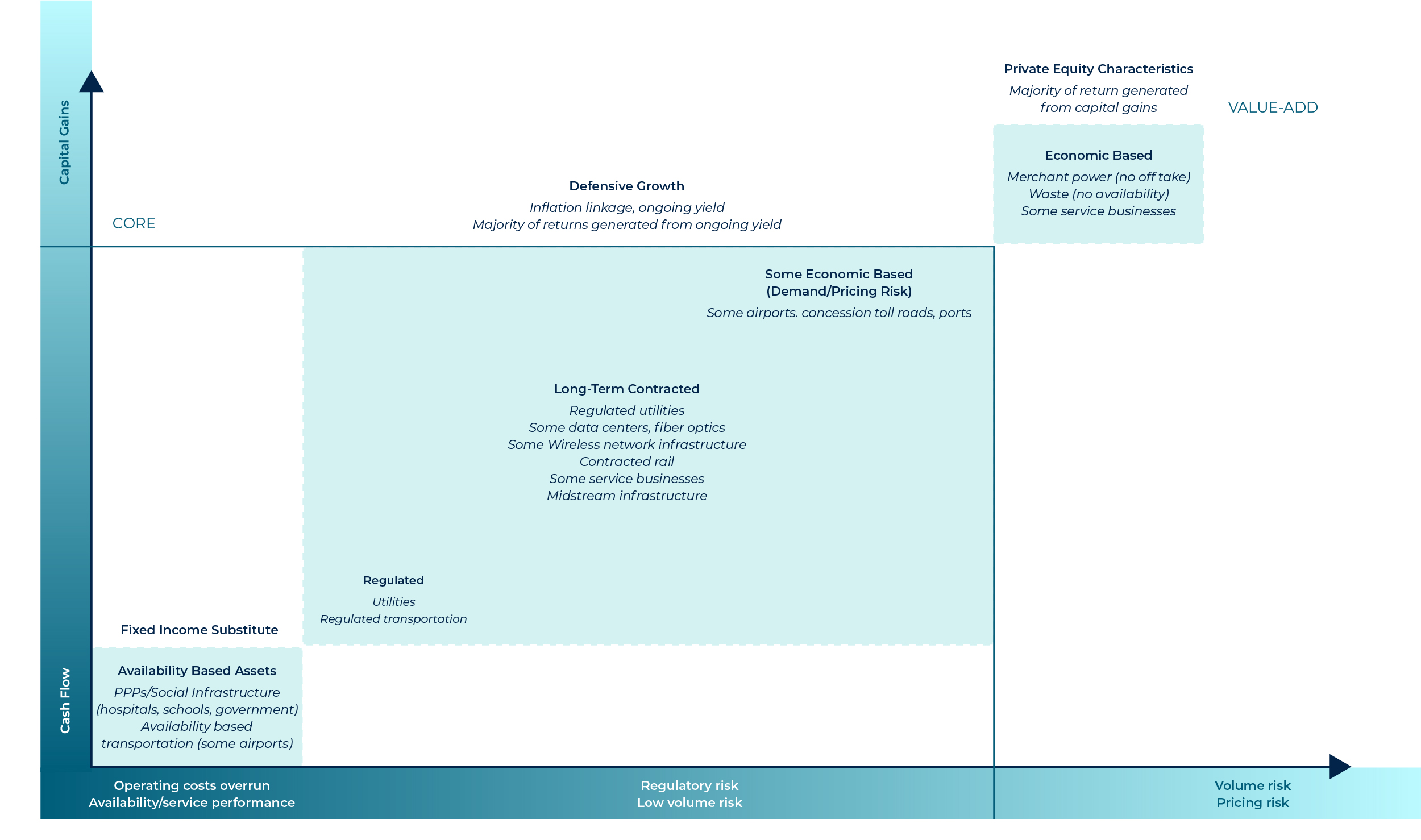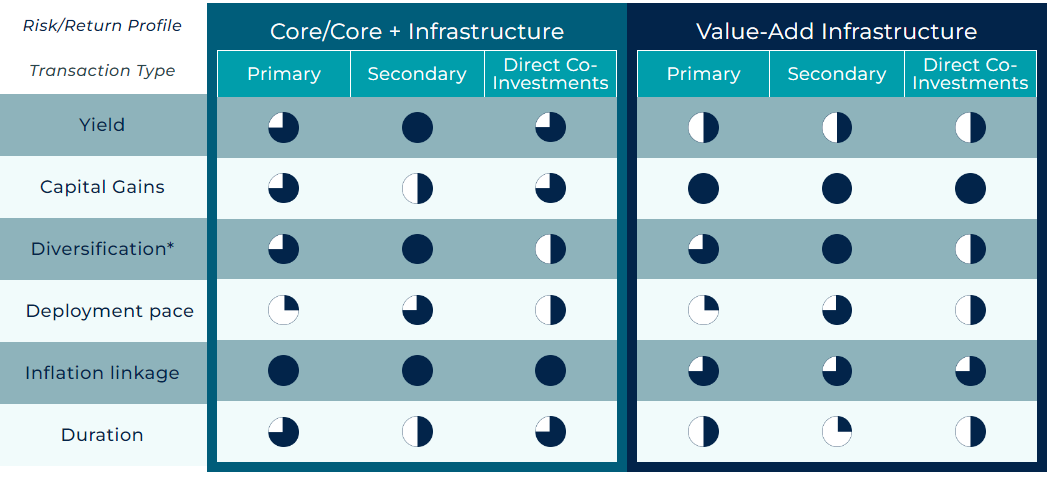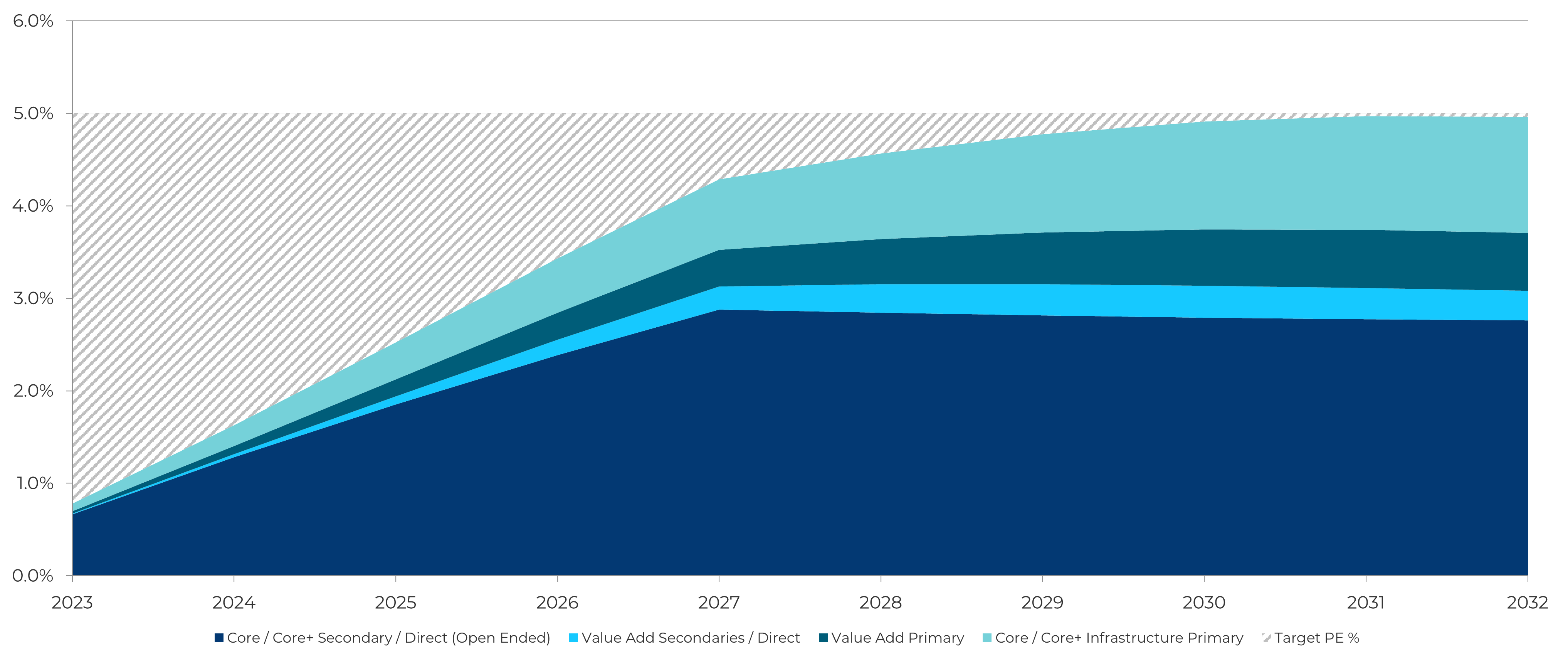This is a marketing communication intended for use by institutional and professional investors only. This presentation has been provided to you for informational purposes only. This presentation is being provided in order to assist the prospective client in determining the appropriate structure and terms for the proposed funds referenced herein.
This document contains confidential and proprietary information and should not be disseminated without express written consent from HarbourVest. The Fund will not be registered as an investment company under the U.S. Investment Company Act of 1940, as amended (the “1940 Act”). As a result, investors will not receive the protections of the Investment Company Act of 1940 afforded to investors in registered investment companies (i.e. “mutual funds”).
This communication does not constitute an offer to sell or the solicitation of an offer to buy interests in the Fund or any other fund or investment product sponsored by HarbourVest, or investment services provided by, HarbourVest Partners L.P. or its affiliates. Such an offer may be made only to qualified investors by means of delivery of a confidential Private Placement Memorandum or similar materials that contain a description of the material terms of such investment. No sale will be made in any jurisdiction in which the offer, solicitation, or sale is not authorized or to any person to whom it is unlawful to make the offer, solicitation, or sale. Offers and sales of interests in the Fund may not be registered under the laws of any jurisdiction. The information in this communication is highly confidential and must be read in conjunction with the Private Placement Memorandum of the Fund. This communication does not purport to contain all the information relevant to evaluating an investment in the Fund described herein.
An investment in the Fund involves a high degree of risk and therefore should be undertaken only by prospective investors capable of evaluating the risks of the Fund and bearing the risks such an investment represents. There is no guarantee that the investment strategy will be successful or that the Fund will achieve its objective or the suggested returns. Past performance is not a reliable indicator of future results and there can be no assurance that any HarbourVest fund will achieve comparable results. If you make a decision to invest, you will be buying units / shares in the Fund and will not be investing directly in the underlying assets of the Fund. There can be no assurances that trends will continue.
Past performance information is presented in a manner that HarbourVest believes to be comprehensive and appropriate for prospective investors to assess the performance of the respective HarbourVest funds. Notwithstanding the foregoing, HarbourVest can make available, upon request, annualised performance information relating to any closed HarbourVest funds referenced herein for the preceding 5 years (or, if the respective funds were less than 5 years old, for the whole period since inception) based on complete 12-month periods.
Risks Related to the Structure and Terms of the Private Equity Funds. Investments in a fund of funds structure may subject investors to additional risks which would not be incurred if such investor were investing directly in a fund. Such risks may include but are not limited to (i) multiple levels of expense; and (ii) reliance on third-party management. In addition, private equity funds may issue capital calls, and failure to meet the capital calls can result in consequences including, but not limited to, a total loss of investment. The Fund may make investments that may not be advantageously disposed of prior to the date on which the Fund is dissolved. Although HarbourVest expects that the investments will be disposed of prior to dissolution or be suitable for distribution in-specie at dissolution, HarbourVest has a limited ability to extend the term of the Fund, and the Fund may have to sell, distribute, or otherwise dispose of investments at a disadvantageous time as a result of dissolution. Fund charges will be incurred in multiple currencies, meaning that payments may increase or decrease as a result of currency exchange fluctuations. The Fund may be subject to substantial fees including transaction fees. These fees are paid out by the Fund, which will impact on the overall return of the Fund. No secondary public market for the sale of units / shares in the Fund exists, nor is one likely to develop. The ability to redeem units / shares will be limited and subject to certain restrictions and conditions as described in the Fund’s Private Placement Memorandum. Performance is subject to taxation which depends on the personal situation of each investor and which may change in the future.
Risk of Loss. The investment opportunity is available only for sophisticated investors who are aware of the risks of investing in private funds and an investor must have the financial ability to understand and willingness to accept the extent of their exposure to the risks and lack of liquidity inherent in an investment in any fund described in this communication. There can be no assurance that the operations of a HarbourVest-managed fund or account will be profitable or that a HarbourVest-managed fund or account will be able to avoid losses or that cash from operations will be available for distribution. The possibility of partial or total loss of capital of a portfolio exists, and prospective investors should not subscribe unless they can readily bear the consequences of a complete loss of their investment. Diversification does not protect against losses. Capital is at risk and risk management does not remove risks or prevent losses.
Leverage. A HarbourVest-managed fund or account may use leverage in their investment strategy. Leverage may take the form of loans for borrowed money or derivative securities and instruments that are inherently leveraged, including options, futures, forward contracts, swaps and repurchase agreements. A fund or account may use leverage to acquire, directly or indirectly, new investments. The use of leverage by a fund or account can substantially increase the market exposure (and market risk) to which such fund’s or account’s investment portfolio may be subject.
Illiquidity of Interests; Limitations on Transfer; No Market for Interests. An investor in a HarbourVest-managed closed-end fund or account will generally not be permitted to transfer its interest without the consent of the general partner of such fund. Furthermore, the transferability of an interest will be subject to certain restrictions contained in the governing documents of a closed-end fund and will be affected by restrictions imposed under applicable securities laws. A HarbourVest-managed open-end fund or account will generally provide limited liquidity events for investors, subject to certain restrictions contained in the governing documents of an open-end fund and will be affected by restrictions imposed under applicable securities laws. There is currently no market for the interests in HarbourVest-managed funds or accounts, and it is not contemplated that one will develop. The interests should only be acquired by investors able to commit their funds for an indefinite period of time, as the term of the closed-end fund could continue for over 14 years. In addition, there are very few situations in which an investor may withdraw from a private equity closed-end fund. The possibility of total loss of an investment in a fund exists and prospective investors should not invest unless they can readily bear such a loss.
Availability of Suitable Investments. The business of identifying and structuring investments of the types contemplated by HarbourVest-managed funds or accounts is competitive and involves a high degree of uncertainty. Furthermore, the availability of investment opportunities generally will be subject to market conditions and competition from other groups as well as, in some cases, the prevailing regulatory or political climate. It is possible that competition for appropriate investment opportunities may increase, which may reduce the number of opportunities available and/or adversely affect the terms upon which the investments can be made. General economic conditions, including interest rates, the availability of financing, the price of assets and participation of other investors in the financial markets may adversely affect the value and number of investments made by the Fund. No assurance can be given that the stability of the financial markets in which the Fund may make investments will not be subject to significant deterioration.
Reliance on the General Partner and Investment Manager. The success of HarbourVest-managed funds or accounts will be highly dependent on the financial and managerial expertise of the fund’s or account’s general partner and/or investment manager and their expertise in the relevant markets. The quality of results of the general partner and/or investment manager will depend on the quality of their personnel. There are risks that death, illness, disability, change in career or new employment of such personnel could adversely affect results of the fund or account. With respect to commingled funds, the limited partners will not make decisions with respect to the acquisition, management, disposition or other realization of any investment, or other decisions regarding the commingled fund’s businesses and portfolio.
Potential Conflicts of Interest. The activities of a HarbourVest-managed fund or account may conflict with the activities of other HarbourVest-managed funds or accounts. The Fund will be competing for investments with other parties.
Infrastructure Strategy Risks. Investments in infrastructure and real assets entail certain specific risks, including fluctuations of commodity prices, uncertainty of reserves, exploration and development risks, uncertainty in the developing alternative energy markets and technology, and governmental support and regulations. HarbourVest may be exposed to substantial risk of loss from environmental claims arising in respect of its investments. Furthermore, changes in environmental laws or regulations or the environmental condition of an investment could create liabilities that did not exist at the time of its acquisition and that could not have been foreseen. Investments in natural resources and energy services companies, including mining and oilfield service, product manufacturing, and technology businesses that are involved in the preparation, drilling, completion, production, and abandonment of oil and gas wells and mines could be subject to fluctuations in the demand for their services based on commodity prices, the macroeconomic environment, customer concentration, availability of alternative technologies or services and political or market pressures favoring these alternatives.
Complete information on the risks of investing in a Fund are set out in the relevant Fund’s Private Placement Memorandum.
Please refer to the website https://www.harbourvest.com/eu-sfdr-disclosure/ for further information in relation to certain sustainability-related aspects of the Fund
For additional legal and regulatory information related to HarbourVest offices and countries please refer to https://www.harbourvest.com/important-office-and-country-disclosures/
For information regarding the collection, use and sharing of personal data in accordance with Regulation (EU) 2016/679 (the “General Data Protection Regulation” or the “GDPR”), please refer to the https://www.harbourvest.com/privacy-policy/.













